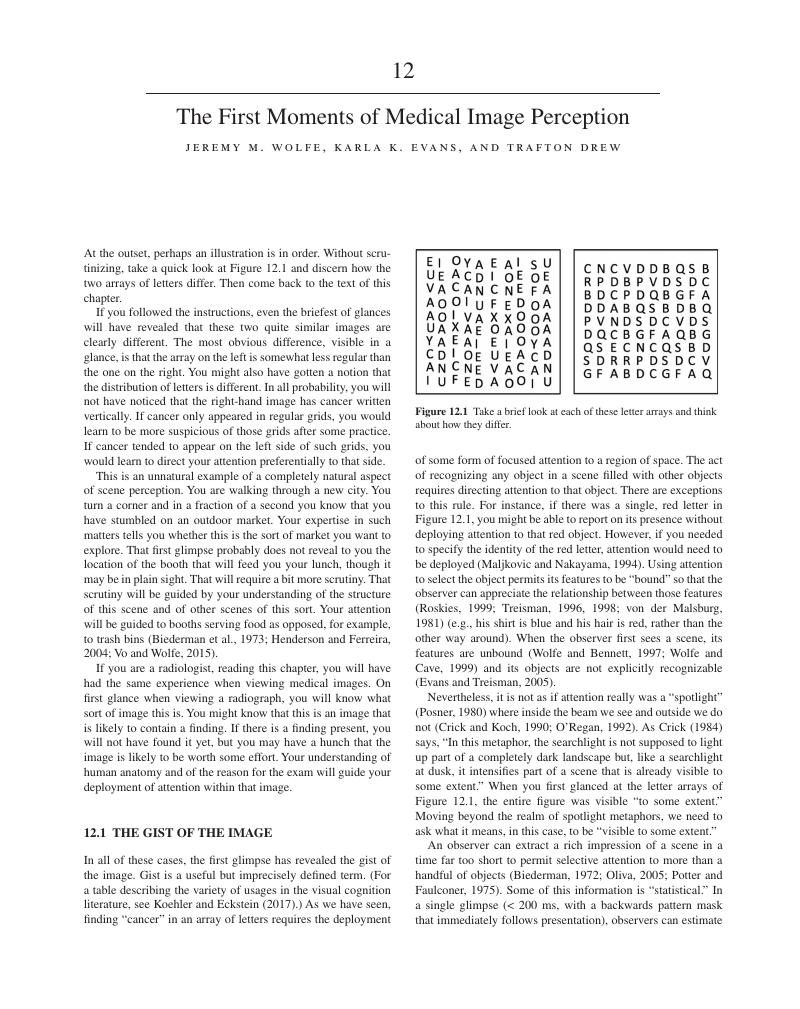Book contents
- The Handbook of Medical Image Perception and Techniques, Second Edition
- Reviews
- The Handbook of Medical Image Perception and Techniques
- Copyright page
- Dedication
- Contents
- Contributors
- 1 Medical Image Perception
- Part I Historical Reflections and Theoretical Foundations
- Part II Science of Image Perception
- 8 Perceptual Factors in Reading Medical Images
- 9 Cognitive Factors in Reading Medical Images: Thinking Processes in Image Interpretation
- 10 Satisfaction of Search in Radiology
- 11 Acquiring Expertise in Radiologic Image Interpretation
- 12 The First Moments of Medical Image Perception
- 13 Image Quality and Its Clinical Relevance
- Part III Perception Metrology
- Part IV Clinical Performance Assessment
- Part V Computational Perception
- Part VI Applied Perception
- Index
- References
12 - The First Moments of Medical Image Perception
from Part II - Science of Image Perception
Published online by Cambridge University Press: 20 December 2018
- The Handbook of Medical Image Perception and Techniques, Second Edition
- Reviews
- The Handbook of Medical Image Perception and Techniques
- Copyright page
- Dedication
- Contents
- Contributors
- 1 Medical Image Perception
- Part I Historical Reflections and Theoretical Foundations
- Part II Science of Image Perception
- 8 Perceptual Factors in Reading Medical Images
- 9 Cognitive Factors in Reading Medical Images: Thinking Processes in Image Interpretation
- 10 Satisfaction of Search in Radiology
- 11 Acquiring Expertise in Radiologic Image Interpretation
- 12 The First Moments of Medical Image Perception
- 13 Image Quality and Its Clinical Relevance
- Part III Perception Metrology
- Part IV Clinical Performance Assessment
- Part V Computational Perception
- Part VI Applied Perception
- Index
- References
Summary

- Type
- Chapter
- Information
- The Handbook of Medical Image Perception and Techniques , pp. 188 - 196Publisher: Cambridge University PressPrint publication year: 2018
References
- 2
- Cited by

